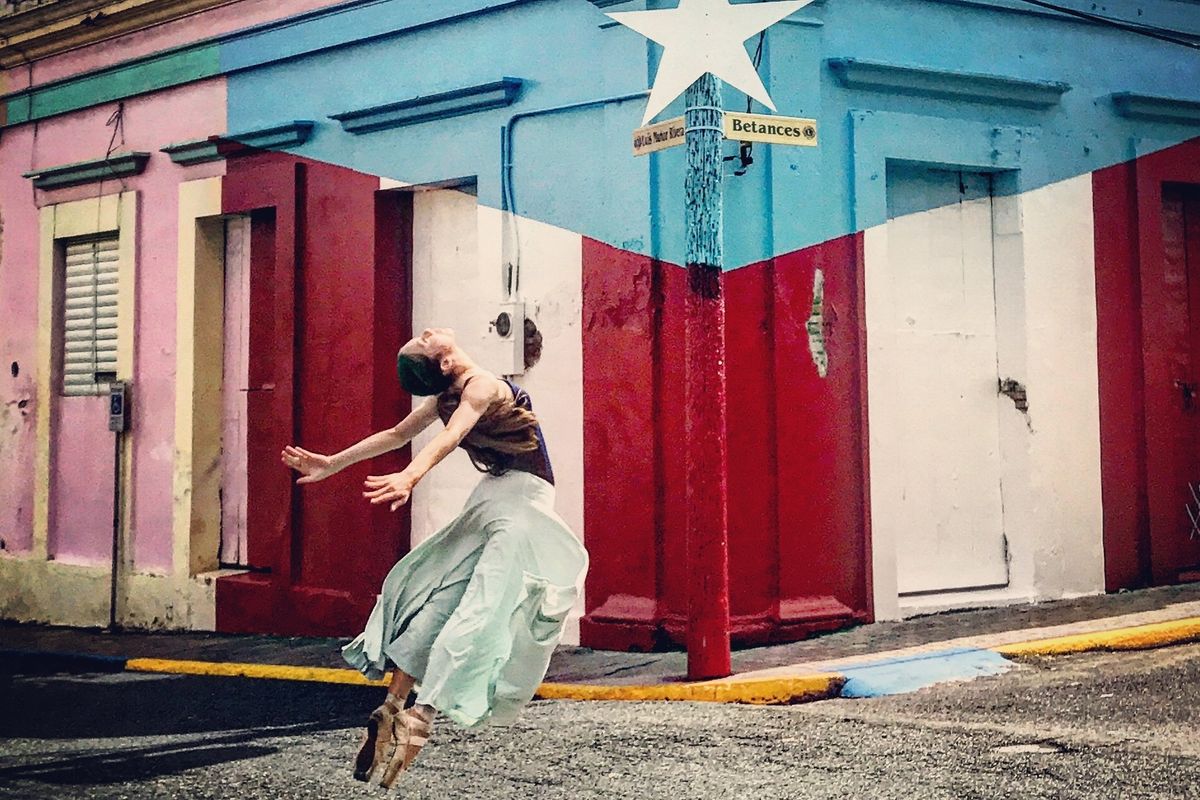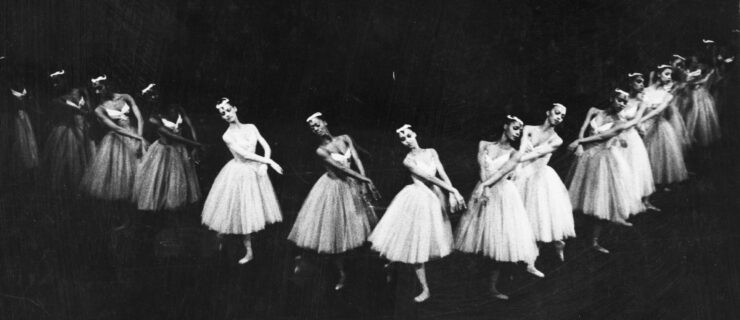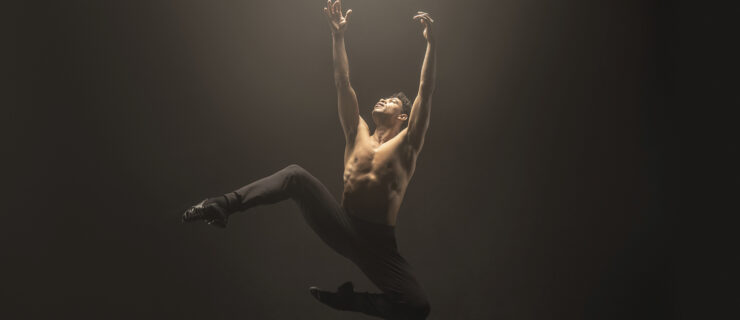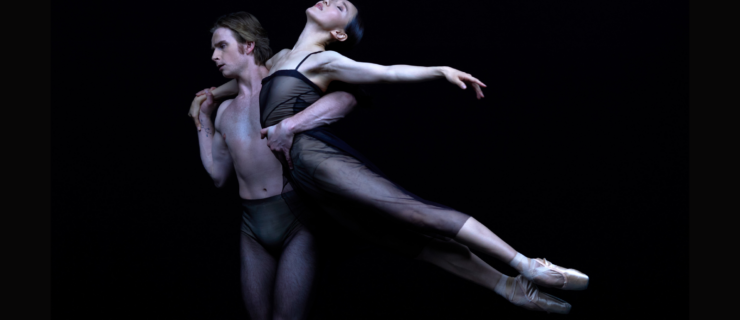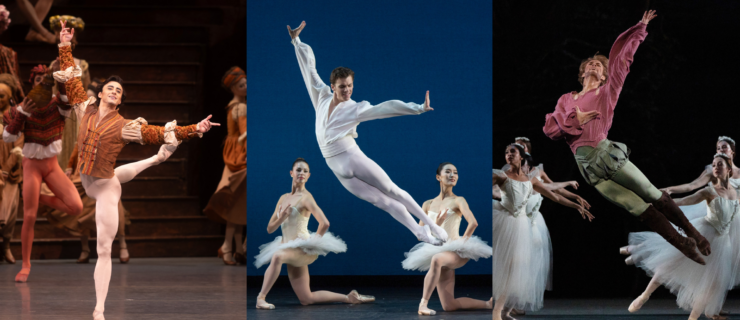After the Storm: One Year After Hurricane Maria, Puerto Rican Dancers Are Finding Ways to Forge Ahead
On September 20 of last year, a violent hurricane, almost a Category 5, hit Puerto Rico head-on. The mega-storm laid waste to the American territory, knocking out power, flooding roads and houses, flattening buildings, and killing 2,975 people as it barreled northward. Large swathes of the island remained without electricity or running water for weeks—in fact thousands of homes were still without power nine months later. It was the worst storm to hit the island in at least eight decades.
The hurricane and its aftereffects touched everyone in Puerto Rico—including its ballet community. Flooded schools were unable to give classes, performances were canceled, and ballet companies were forced to go on hiatus. Students were already dealing with storm-related difficulties at home, so, for a while, training was on the back burner. But dancers are famously determined, and soon they were doing what they could to stay in shape—a fact underscored by a video that appeared on Twitter, of students rehearsing in the dark, illuminated only by car headlamps.
But progress has been slow. Many ballet students were faced with a difficult decision: to stay in Puerto Rico or to leave and continue their training.
 Palacios relocated to Sarasota after her ballet company went on hiatus. Photo Courtesy Sarasota Cuban Ballet School.
Palacios relocated to Sarasota after her ballet company went on hiatus. Photo Courtesy Sarasota Cuban Ballet School.
Six young dancers ended up at the Sarasota Cuban Ballet School, in Sarasota, Florida. They arrived through the efforts of the academy’s directors, the husband-and-wife team of Ariel Serrano and Wilmian Hernandez. Danny Rivera, 20, was one of them. Rivera had gotten to know the couple during a summer intensive earlier in 2017; shortly after the hurricane, he got in touch via text message. His messages were desperate, says Francesca MacBeth, the school’s administrative director: “He wrote that people were dying,” she recalled recently, “and that he couldn’t get out.” His school, the Ballet Concierto de Puerto Rico, in San Juan, was flooded. The Sarasota school organized a fundraising drive, Sarasota And Puerto Rico Dance Together, quickly raising nearly $24,000 to bring Rivera and five other dancers to the mainland to continue training.
“Dancers on the island are resilient,
their parents are resilient,
teachers are resilient.” —Tahimy Santana
Since November, they have been living and studying in Sarasota, in housing provided by the school. Rivera hopes to stay for another year on scholarship to work on his technique—he began late, at 16, after years of playing football—and then start auditioning. He says he doubts he’ll be able to go back to Puerto Rico to dance professionally: “The moment you get used to the rhythm of life here,” he said recently after class, “it’s just so different. My life has changed completely.” Though the situation has improved back home, and his old studio has reopened, he says there is a depressing sense of inertia on the island: “The economy and everything is going down,” he says, “little by little.”
 Iris Rocío Dávila on life after Hurricane Maria: “Puerto Rico was one thing before, and something else after.” Photo by Luis Negrón, Courtesy San Francisco Ballet.
Iris Rocío Dávila on life after Hurricane Maria: “Puerto Rico was one thing before, and something else after.” Photo by Luis Negrón, Courtesy San Francisco Ballet.
Another of the Sarasota dancers, 19-year-old Vianca Palacios, echoes his sentiments. Her family is from Caguas, in the heart of the island, an area that was devastated by the hurricane. Before Maria, she had just been promoted into the corps at the Balleteatro Nacional de Puerto Rico. After the storm, it was forced to close, at least temporarily. “I had to wait a month to start taking classes wherever I could find them,” she says, often driving for long distances on damaged roads. “There were no lights. It was a no-man’s land.” The worst thing, she says, is that people have begun to get used to the situation, “because they just have to keep going.”
When the Sarasota Cuban Ballet School reached out to her, she took a leap of faith, even though it meant going back to school. She too hopes to start auditioning soon; her dream company is the Ballet Nacional Sodre, in Uruguay, home of principal dancer María Riccetto, which she discovered via Instagram.
All over the island, families are making similar decisions. Fifteen-year-old Alanah Gelabert comes from Sabana Grande in the southwest corner of Puerto Rico, an area less affected than San Juan or Caguas. Still, during the storm her bedroom flooded, and the family had no power for over a month. The situation was particularly stressful for her brother, who is autistic. At her school, the Western Ballet Theatre of Puerto Rico, in Mayagüez, a large crack in the building caused by high winds still causes the hallways to flood each time it rains. Gelabert applied to Boston Ballet School’s 2018 summer intensive and got in. She had hoped to stay for the regular term, but wasn’t accepted. Her new plan is to apply to Juilliard in January, though the question of how to fund such a move is still up in the air.
 Danny Rivera (left) in a Sarasota Cuban Ballet School performance. Photo by Soho Images, Courtesy Sarasota Cuban Ballet School.
Danny Rivera (left) in a Sarasota Cuban Ballet School performance. Photo by Soho Images, Courtesy Sarasota Cuban Ballet School.
A similar situation faces Iris Rocío Dávila,17, who grew up on a farm in Vega Alta, 45 minutes west of San Juan. Currently, she’s at the San Francisco Ballet School. Just before the hurricane she had attended SFB’s 2017 summer program, but went home after she wasn’t accepted for the full winter term. In Puerto Rico, she studied at two different schools, the Escuela Especializada en Ballet Julián E. Blanco and the Conservatorio de Ballet Concierto de Puerto Rico. Then came the tempest; both schools were shuttered for two months. As the San Francisco Chronicle reported earlier this year, Dávila decided to write a letter to the director of the SFB School explaining her predicament. (She wrote it by candlelight.) She was accepted two months later, with a scholarship covering tuition, and arrived in January. Still, living in San Francisco is expensive. Her teacher back home helped raise enough money to cover housing for one semester. Though she has been accepted on full scholarship for the fall term, she did not receive financial aid for housing, without which it will be difficult for her to stay there. “It’s hard for my family,” she says simply, turning pensive.
This exodus of talent is in itself a reason for worry. How can there be a thriving ballet culture in Puerto Rico when the most determined dancers leave? “Practically the whole island changed after the hurricane,” said Dávila in a phone conversation during SFB’s summer intensive. “Puerto Rico was one thing before, and something else after.” Gelabert’s mother, Tahimy Santana, also worries: “The arts are the last thing in the process of recovery for Puerto Rico,” she says. But, like the others, she hasn’t lost hope. “Dancers on the island are resilient, their parents are resilient, teachers are resilient,” she told me. “Hurricane Maria has taught my daughter and other Puerto Rican dancers how strong and driven they can be.”
